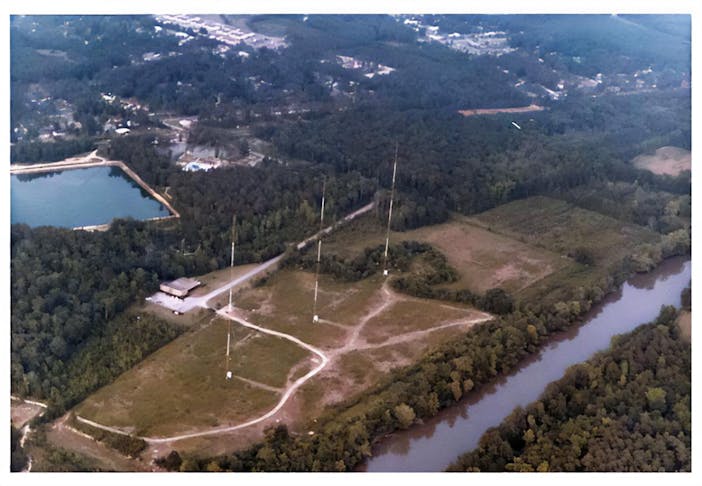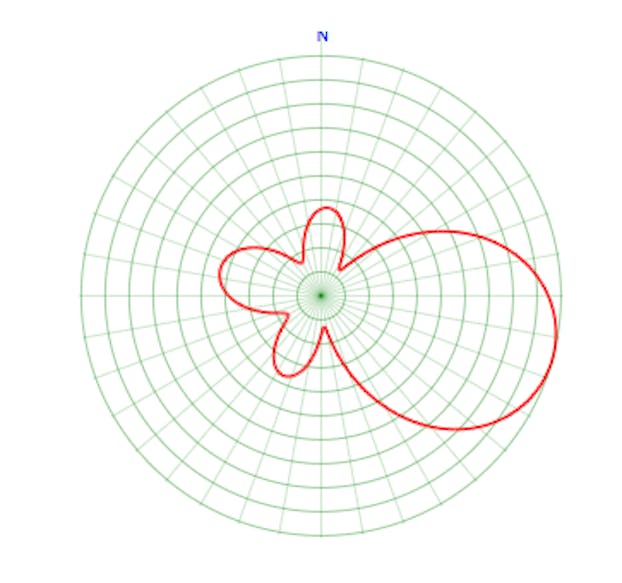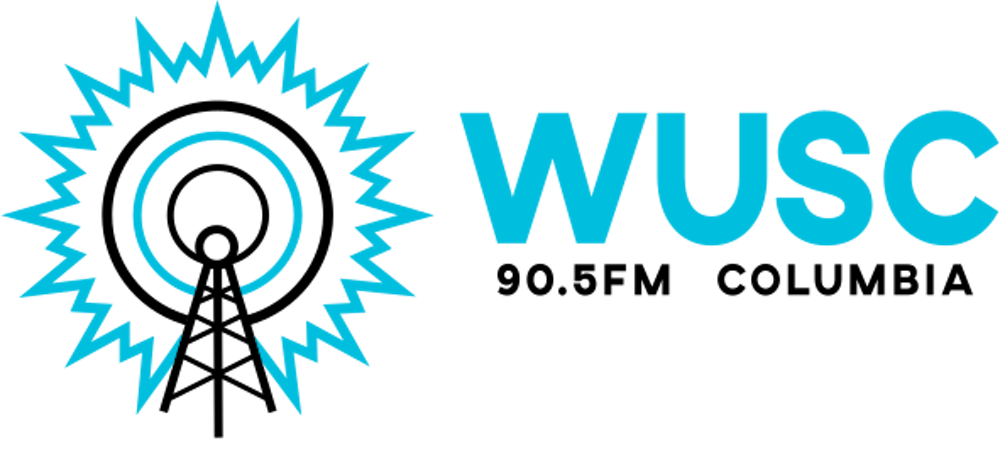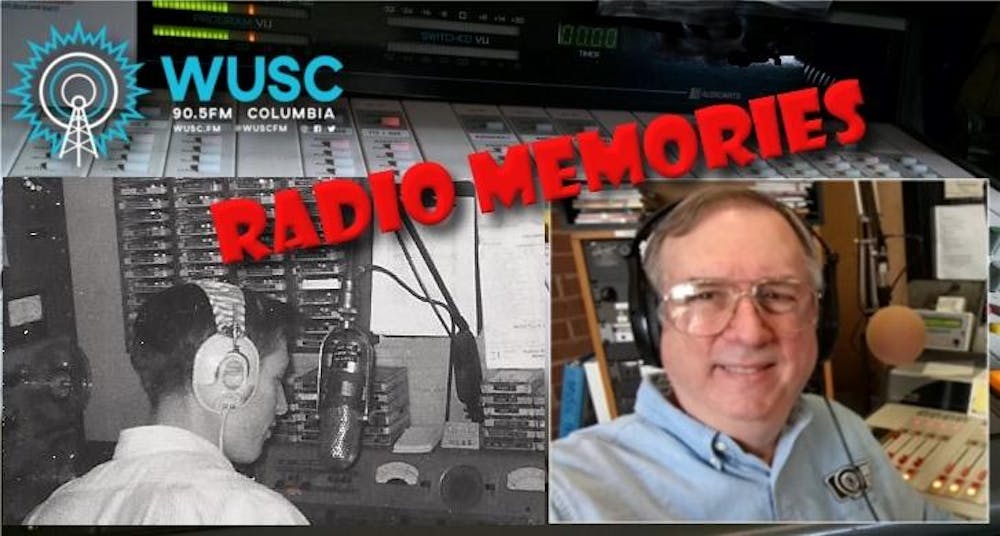Back in Radio
In the Spring of 1976, I was promoted to Chief Engineer at WIS Radio when Joe Davenport retired. A word about the title “Chief Engineer.” Engineer and engineering were bandied about broadcasting commonly back in those days. Some were true Registered Professional Engineers but most of us were not. I was back at USC part time working on my Electrical Engineering degree which I completed in 1992. Yes, it took a long time doing it one course a semester. By time I graduated, I was actually doing more computer work than engineering so I never sat for the RPE exam. In today’s world most “Broadcast Engineers” would be titled “Broadcast Technicians” but the departments they worked in are still named “engineering.”

Joe and I overlapped for his final two weeks, during which he brain dumped his experience to me. I learned how to take the base current readings in the three tuning houses at the base of the thee towers that aligned with the Saluda River. I also learned how to take the “common point” current reading on the front of the phasor unit behind the transmitter in the WIS Radio Studios at 1 Radio Lane, just off Bush River Road.
Wait a minute, you say, did you have one of those things that they shot aliens with in Star Trek? Nope, a phasor unit was a large open metal frame full of coils and capacitors used to split the transmitter output into three separate feeds to the three towers in our nighttime directional array. During the daytime, WIS was a non-directional station broadcasting from our middle tower only. At nighttime the phasor arranged the timing of the signals to each tower so that it arrived in phase with the signal from the first tower, adding strength to the signal in the direction from the first tower. This caused the signal pattern to be strongest towards the city with minor lobes of power going out in some other directions. The signal pattern also contained “nulls” in the direction of other stations on our frequency to minimize interference. All I’ll say is that it involves calculus and a thing called imaginary numbers. Anything else is Too Much Information, (TMI).

Five nights a week, the chief engineer had to measure the common point current and the base currents of the three towers and log them into the transmitter log. The DJs had to take transmitter readings; Final Voltage, Final Amperage and frequency deviation every half hour and log them in the same paper log. There was a lot of paperwork back then. These days, with computer controlled (automatic) transmitters run themselves unattended.
We used the same transmitter day and night, a RCA BTA-5T 5,000 watt transmitter operating at 560 kilocycles near the very desirable low end of the AM band. It even had red doors with windows so you could see the tubes inside glowing cherry red with blue licks of corona that flickered in time with the modulation, the sound going through the transmitter. There was a button in master control that flipped large switches, called actuators that changed the power from day time to the nighttime pattern. At the time of the switch, the transmitter power would also be switched off momentarily to prevent arcs and other bad things for the health of the transmitter. Joe warned me that if you were signing on after the transmitter had been off, you needed to wait a minimum 30 seconds after turning on the filaments before powering up the transmitter with the plate current switch. Failing to wait those 30 seconds could cause arcs and smoke and require the replacement of the final tubes, whose price ranged around $1-2 thousand dollars. Despite the cost, we always kept a spare on hand. He also told me that there was a timing circuit in the RCA transmitter that prevented the plates from coming on for 30 seconds.
One of the most pleasant FCC requirements was that each week I had to go out and take signal strength readings at our four monitor points. The closest one was about a mile away down Bush River Road, the most distant one were on the other side of the Saluda River. So, every Friday afternoon I would my trusty Potomac Instruments field strength meter and drive to the four points and take my readings. Because two of the points were on the other side of the river, this usually took about an hour. Sometimes it took an hour and a half because one of the monitor points was in front of a Garden and Tractor supply store on highway 378 near where I-20 crosse4s it now. The owner of the store was a great gentleman in his 70’s complete with his green John Deere hat and dungaree bib overalls. He would always greet me with a RC and Moon Pie and we would take a few minutes catching up with the world. He was most impressed that while I was at WIS-TV I was involved with the Bob Bailey Farm Show. Sometime in early 1979, I showed up and he was not there. I hadn’t seen him for almost a month when one Friday, his car was there. When I went in, he and his wife greeted me with the usual snack. But he was in a wheelchair after having suffered a stroke. They were there to tell me good bye, they were selling the store and he was retiring. I still miss those conversations that took me away from the hustle and bustle of radio.
It was pretty easy getting into the swing of things at WIS Radio. As Chief Engineer I was part of the management team which met in our General Manager’s, John Grimes, office at 10 AM on Monday Mornings. I felt at home there immediately.
On Tuesday of the first week after Joe retired, I was working at my desk in front of the transmitter and next to our IGM Automation system, irreverently called “Bozo.” All of a sudden the commercial power dropped for about 5 seconds and then immediately came back on. Remembering what Joe had told me about the 30 second delay circuit and realizing that if I was wrong, the final tubes were already warm, I reached behind me and flipped the plate current switch back on. As expected, nothing happened so I began counting down the 30 second delay in my head. Also as expected there was immediate chaos all around, everybody from the newest part time announcer to our general manager showed up in front of my desk. The part timer excitedly said, “We’re Off The Air!” as only excitable part timers could. At this point, I was about 5 seconds from the end of my internal count down so I stood up, said, “I’ve got this” turned around and raised my hands near the face of the transmitter like a preacher would in a revival tent and said, “Heal!” The timing circuit obligingly did its job and the plates came on without my touching the transmitter. I smiled and sat back down in my chair.
Our GM, John Grimes started laughing but the part timer wouldn’t come near me for a week.

I was born in a great Radio Town; Jacksonville Florida. So it was only natural that I joined WUSC (AM at the time) in my first semester 1963. I went on to a career in commercial radio and television in Columbia, WCOS AM & FM, WIS-TV, WIS Radio, SCETV and PBS. I'm retired now, giving back since 2010 to the station that started my career, WUSC-FM. If you did the math you will know that I celebrated the 60th anniversary of my first radio show ever in November 2023.

